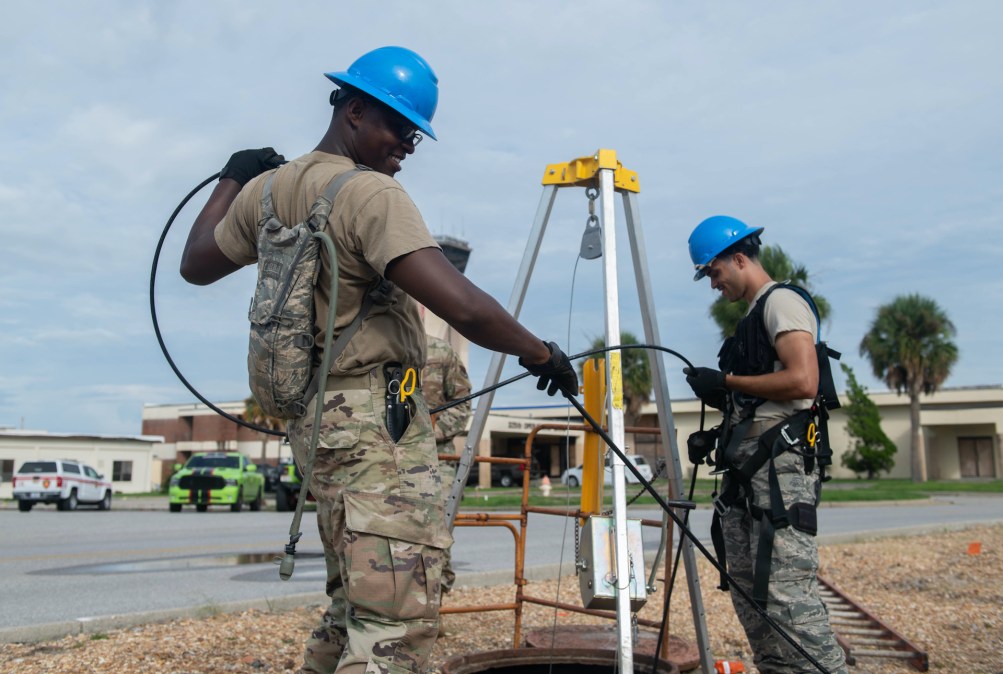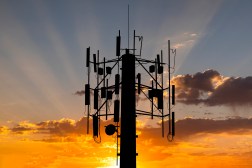5G helping to increase security at Tyndall as Air Force rebuilds ‘smart base’

As the Air Force rebuilds the hurricane-damaged Tyndall Air Force Base in Florida, it is pairing the low-latency and large data-transmission of 5G networks with digital twin technology to try and increase base security, according to the general in charge of the rebuild.
The plan is to connect thousands of sensors at Tyndall that collect data and can detect intruders and transmit it by 5G wireless into a digital twin model, or software-defined replica of physical settings, giving security officers greater visibility to potential threats.
The sensor networks are still being developed in partnership with private companies, but the goal is to increase the precision and amount of data that can be used. The software model of the base is in the works after several contracts were signed in October through Afwerx, the Air Force emerging technology acquisition arm.
Brig. Gen. Patrice Melancon, the executive director of the base reconstruction effort called the 5G-enabled sensors “robot dogs,”during an AFCEA DC virtual event on 5G at military bases.
The idea works best with 5G because current wireless networks can’t transmit the amount of data needed to create the fully digitized operating picture. It’s unclear when the security systems will be fully operational, but Melancon said that modernization on the bases continues to show positive results.
The Air Force has several bases that operate 5G testing, but Tyndall has been selected to be a “smart base of the future” after a hurricane Michael wrecked much of it in 2018 and the Air Force chose to rebuild it with new technology as a test case.
Digital ‘woof’
The “dogs” will bark by transmitting data whenever activity on the base perimeter is potentially nefarious. The digital-twin technology also will be linked to gunshot-detecting sensors. Several bases have been the targets of insider-threat attacks involving gunfire, including some fatal shootings. This “shot spotter” technology is not new, but what 5G can offer is enhanced precision as to where shots are coming from, since the networks can handle much more data and at much faster speeds, Melancon said.
“It gives a much better real-time picture for our first responders,” the general said.
The technology piloted on military bases is designed to one day be used in the civilian world, according to the DOD 5G strategy. The Air Force is trying to get LTE and 5G “in all bases” to be able to develop the technology and one day transfer its capabilities to the general public.






